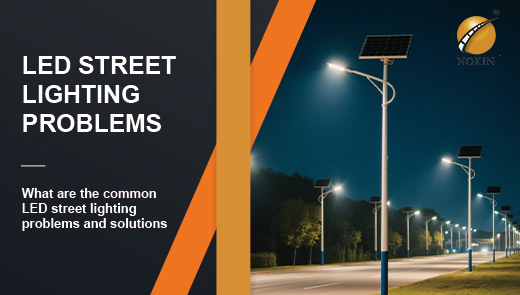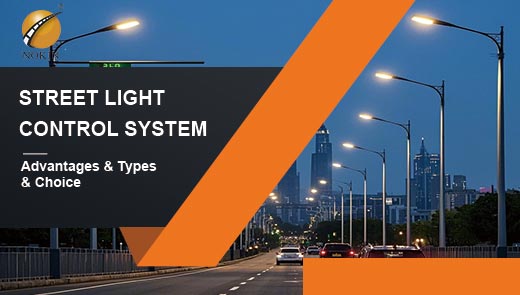Important parameters and calculations of solar street lighting systems
In the process of modern urban development, solar street light system has become an important choice in the field of urban lighting by virtue of its advantages of green environmental protection, strong sustainability and reduction of long-term electricity costs. However, to ensure the efficient and stable operation of the solar street light system, it is crucial to accurately grasp the parameters of the system and carry out scientific calculations. If the parameters are not configured properly, it will not only lead to insufficient lighting at night, but also shorten the service life of the components, resulting in a waste of resources.
Wattage and efficiency of LED street lights
The initial design considerations
The first task of designing a solar street light system is to clarify the power and energy consumption of the LED street light and other solar-powered components (e.g. WiFi modules, surveillance cameras, etc.). These data are the basis for subsequent calculations of the overall energy consumption of the system and for determining the battery capacity and solar panel power.
Steps for calculating total energy consumption
Calculate luminaire power / luminous flux
Luminaire power is closely related to road lighting requirements. In actual projects, customers usually put forward the power parameter requirements, but professional street light suppliers recommend the luminous flux as the main reference. Because efficient streetlights can achieve the required luminous flux with lower power, thus avoiding energy waste, reducing the requirement for batteries and solar panels, and reducing the risk of light pollution. When the power parameters proposed by the customer are not reasonable, lighting simulation technology can be used to determine the most appropriate power of the lamps.
Calculate the power consumption of the luminaire
Power consumption is measured in watt-hours (Wh), which directly affects the choice of battery capacity and solar panel power. The formula for calculating the total watt-hours per day for streetlights is:
Total Watt-hours / Day = Timeslot 1 Power Consumption (W) x Timeslot 1 Operating Hours + Timeslot 2 Power Consumption (W) x Timeslot 2 Operating Hours + ... + Timeslot x Power Consumption (W) x Timeslot x Operating Hours
For example, if a street lamp with a power of 100W operates for 12 hours per day, with the first 6 hours at full power and the second 6 hours at 50% power, the total Watt-hours per day will be:
Total watt-hours/day = 100W x 6 hours + 50W x 6 hours = 900 watt-hours (Wh)
Solar panel of solar street lighting systems – wattage and type
Factors affecting the size of solar panels
The size of the solar panel required for a solar street light system mainly depends on two key factors: the total daily watt-hours of the system and the local insolation factor. The local insolation coefficient correlates with the number of hours of light at the location where the streetlight is installed, and varies significantly from region to region. For example, Saudi Arabia has 6.2 hours of effective sunlight, while Cameroon has only 4.6 hours, which results in different solar panel power requirements for the same energy demand.
Calculation of solar panel capacity
Theoretical calculation
Based on the total daily watt-hours and local sunshine hours, the theoretically required solar panel power can be calculated. The calculation formula is:
Required solar panel power = total watt-hours × 1.333 ÷ sunshine hours
Taking the aforementioned 900WH energy consumption street light as an example, the required solar panel power in Saudi Arabia = 900×1.333÷6.2 = 193.5Wp, and in Cameroon, the required solar panel power = 900×1.333÷4.6 = 260.8Wp. It can be seen that the more abundant the light, the smaller the required solar panel power.
Actual Configuration
The solar panel capacity provided by the supplier is usually an integer, so the theoretical calculation should be rounded up. For example, if the calculation result is 193.5Wp, the actual configuration should be 200Wp solar panels. In addition, installing higher power PV modules will help improve overall system performance and extend battery life; conversely, if the PV modules are under powered, it may result in the system not working properly on cloudy days, and the battery will have a shorter lifespan due to a prolonged power loss.
Battery of solar street lighting systems – capacity and type
Recommended Battery Types
Deep cycle batteries are ideal for solar PV systems. This type of battery is designed for rapid charging after deep discharge or continuous charging and discharging for many years, which can adapt to the characteristics of electricity used in solar street light systems.
Comparison of battery types
|
Battery Type |
Cost |
Lifespan |
Safety |
Depth of Discharge |
|
Lead - acid Battery |
Low |
Short |
Moderate |
0.7 |
|
Lithium Battery (including Lithium Iron Phosphate) |
High |
Long |
Good |
0.8 |
Battery capacity calculation
The formula for calculating the required battery capacity is:
Required battery capacity (Wh) = total watt-hours (/day) × days of self-sufficiency ÷ 0.9 ÷ depth of discharge of deep-cycle batteries
Where 0.9 is used to calculate battery loss, the depth of discharge for lead-acid and lithium batteries is calculated as 0.7 and 0.8 respectively. For example, if the required battery capacity is calculated to be 1333WH, for a 12V lead-acid battery, the capacity should be 1333÷12≈111AH, and in practice, 120AH is usually chosen by rounding up (120Ah×12V = 1440WH>1333WH).
Controller of solar street lighting systems – calculation and type
The role of the controller
Charge/discharge controller is the key component of solar street light system, which is responsible for connecting solar panel, battery and LED street light, managing the charging process of solar panel to battery as well as the power supply process of battery to street light. By ensuring that the battery is charged and discharged within a safe range, it effectively extends the service life of the battery.
Integrated Functions
Some controllers have integrated LED driver function, which can convert 24V or 12V power supply into suitable working current for LED chips; if this function is not integrated, additional DC LED driver is required. In addition, the solar controller also has the function of controlling the switch of LED lamps, adjusting the brightness and real-time dimming through sensors, which is the core component to ensure the stable operation of the system.
Steps to Calculate Solar Road Lighting Requirements
Determine the lighting requirements
According to the type of road to determine the required illumination level, such as city streets usually require 20 lux. Through the formula:
illumination level (lux) = luminous flux (lumens) ÷ area (square meters)
can be calculated to meet the lighting requirements of the required luminous flux.
Calculate the number of lamps required
Calculate the total luminous flux:
total luminous flux = luminous flux level × road area
according to the illuminance level and road area, and then calculate the number of lamps and lanterns required:
number of lamps and lanterns = total luminous flux ÷ luminous flux of individual lamps and lanterns
by combining the luminous flux of individual lamps and lanterns.
Calculation of solar panel and battery capacity
Calculate the required solar panel capacity according to the total daily energy consumption and average sunshine hours:
required solar panel capacity = total daily energy consumption ÷ average sunshine hours
in order to ensure continuous operation of the system, calculate the battery capacity according to the number of self-supply days of 2-3 days:
battery capacity = daily energy consumption × number of self-supply days
and take into account the weather and seasonal changes to appropriately increase the margin of 20-30%.
The parameter setting and calculation of solar street light system is a systematic project, and the parameters of each component are interrelated and affect each other. Only by accurately grasping the key parameters such as LED street light power, solar panel power, battery capacity and controller function, and carrying out scientific calculations, can we design an efficient, stable and sustainable solar street light system.
With the continuous progress of technology, in-depth understanding of these parameters will help to further optimize the system design and promote the widespread application of solar street lights in the field of urban lighting.




